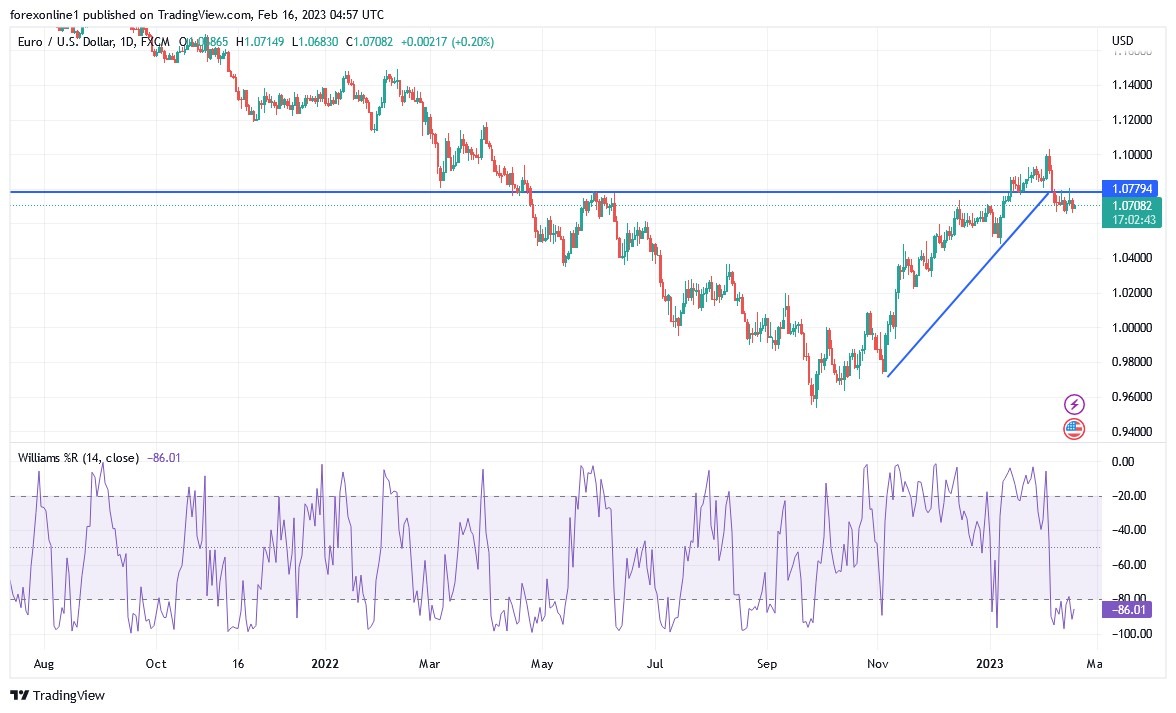The US dollar rose as better-than-expected retail sales data failed to spark a rally in financial markets. The US currency has had a mixed week so far amid worse-than-expected US inflation data and investors deciding whether the US Federal Reserve will continue to raise interest rates or press the pause button in the tightening cycle.
The losses of the EUR/USD currency pair reached the support level of 1.0660, the lowest for the currency pair in more than a month, and settled around the level of 1.0710 at the time of writing the analysis. The performance of the currency pair came despite the European Central Bank's assertion that it is determined to raise interest rates by half a point, but the strong US economic data ensures that the US central bank will continue to tighten, which supported the US dollar more strongly.
According to the US Census Bureau, US retail sales rose 3% in January, the best monthly performance since March 2021. The reading also beat market estimates of 1.8% after two consecutive monthly declines. Retail data posted broad gains in supermarkets (17.5%), food services and drinking establishments (7.2%), auto and parts stores (5.9%), furniture stores (4.4%), electronics and appliances (3.5%), and apparel (2.5%). ).
While retail sales were not adjusted for inflation, market analysts note that the data was strong amid a strong labor market and signs of easing inflationary pressures. The US housing market has indicated some slowdown after a significant rebound in recent weeks. Mortgage applications fell 7.7% for the week ending February 10 as the 30-year mortgage rate rose to 6.39%, according to the Mortgage Bankers Association (MBA).
In addition, New York's Empire State Manufacturing Index improved to -5.8 in February, up from -32.9 in January. However, it has been in contraction territory for nine of the past eleven months.
The next major US economic data will be Producer Price Index (PPI), Trade Prices, and Building Permits.
The US Treasury market was mixed in the middle of the trading week, with the benchmark 10-year yield unchanged at 3.761%. The one-month yield was flat at 4.562%, while the 30-year yield fell half a basis point to 3.795%. Accordingly, the US Dollar Index (DXY), a measure of the US currency against a basket of other major currencies, rose 0.55% to 103.80, from an opening of 103.21. All in all, the index is up 0.4% this week and turned positive on a yearly basis.
Euro predictions against the dollar today:
- So far, the general trend of the EUR/USD currency pair is still bearish.
- The stability is below the current support level of 1.0700, which confirms the bears' control over the trend.
- The technical indicators are heading towards oversold levels, and forex investors can think of buying back the currency pair from the levels 1.0645 and 1.0575, respectively.
According to the performance on the daily timeframe chart, the EUR/USD pair will not return to the upward path without the return of stability above the resistance 1.0845. Today, the euro-dollar will interact with the announcement of US economic data readings, the Producer Price Index, the number of weekly jobless claims, and the Philadelphia Industrial Read. The US housing market figures.

